Fashion
Topless Hat
1960's fashion. Wear it down to cover up. Wear it up for the au naturel look.
The Cincinnati Enquirer - July 5, 1964
Posted By: Alex - Tue Feb 07, 2017 -
Comments (3)
Category: Fashion, Headgear, 1960s
Hey, Let’s Twist!
The movie so great it inspired its own line of Ivey, Jivey suits for Cats!
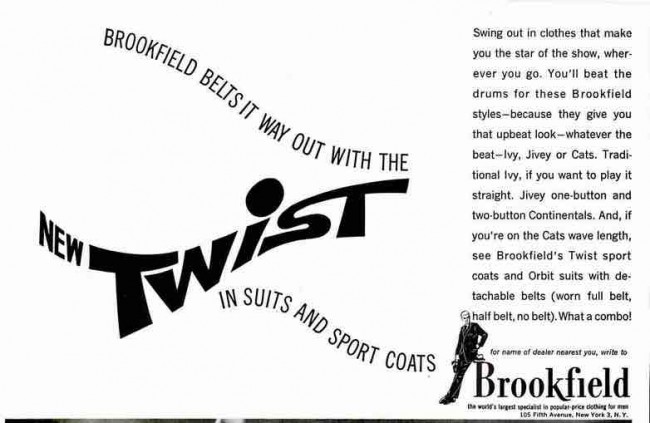
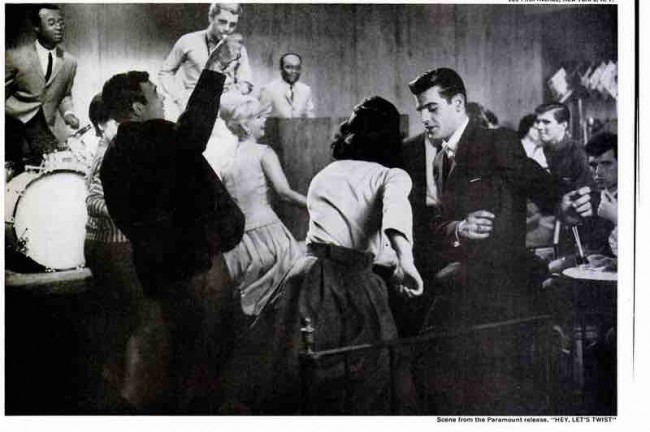
Original ad here.
Posted By: Paul - Tue Jan 24, 2017 -
Comments (7)
Category: Fads, Fashion, Movies, Music, Teenagers, 1960s, Dance
Astro-Face of the Year 2017
According to beauty experts in 1967, the women of 2017 would wake up in the morning and make themselves beautiful by applying a paste-on "Moon Maid Mask" that would "change the structure of a face from neckline to hairline."Other 21st-century beauty enhancements would include:
Instant Youth: Plastic surgery in the form of silicone or other type injections which do in a matter of minutes what now takes weeks of hospital treatment.
The instant youth prediction was fairly close to the mark.



Akron Beacon Journal - Sep 10, 1967
Posted By: Alex - Sun Jan 01, 2017 -
Comments (0)
Category: Fashion, Yesterday’s Tomorrows
Space Age Bridal Creation
March 1962: Arlette Dobson and John Richard took a stroll along London's Park Lane while modeling a "space age bridal outfit."I'd like to see a wedding with the bride and groom wearing these outfits, and the bridesmaids in Gianangelli's lunar bathing suits.


Rochester Democrat and Chronicle - Mar 10, 1962
Posted By: Alex - Tue Dec 06, 2016 -
Comments (3)
Category: Fashion, 1960s, Weddings
Fashion 2000
Interestingly, I think the predictions from farther away from the year 2000 were a bit more accurate than those that were closer!
Posted By: Paul - Tue Nov 15, 2016 -
Comments (1)
Category: Fashion, Futurism, 1930s, 1960s, Twenty-first Century
Nixon’s Palace Guard
January 1970: The White House guard (secret service uniformed division) publicly revealed their new uniforms which featured a white, double-breasted tunic with gold shoulder trim and a stiff shako hat with peaked front. They replaced the black uniforms the guards had previously worn on ceremonial occasions.President Nixon had ordered that a new uniform be designed after he had seen what palace guards wore in other countries and had decided that the White House needed something as fancy.
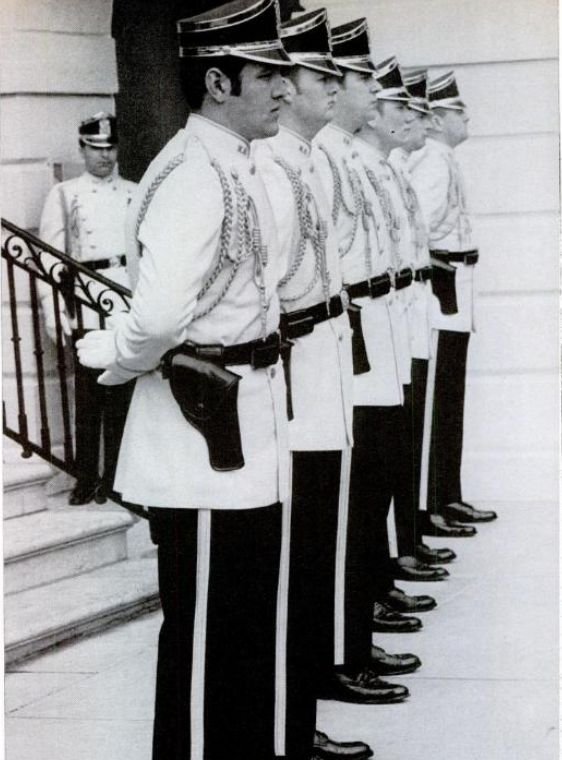
However, almost no one liked the new uniforms. People made comments such as:
- "they look like extras from a Lithuanian movie"
- "Late Weimar Republic"
- "Nazi uniforms"
- "like a palace guard of toy soldiers"
- "will they be goose-stepping, or what?"
- "falls somewhere between early high school band and late palace guard."
- "They look like old-time movie ushers."
- Chicago Tribune columnist Walter Trohan complained they were a "frank borrowing from decadent European monarchies, which is abhorrent to this country’s democratic tradition."
The guards themselves complained that they felt too theatrical and that the hats were uncomfortable. So within a month the hats had disappeared. The white jackets lasted longer, but eventually they too were mothballed.
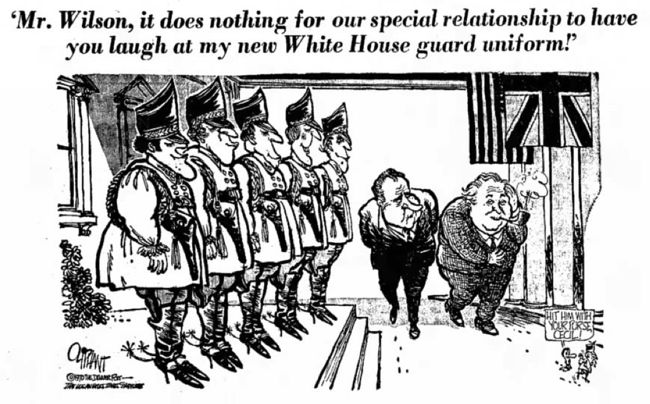
Alton Evening Telegraph - Jan 30, 1970
However, the uniforms weren't thrown out. They sat in storage for a decade, and in 1980 they were sold to the Meriden-Cleghorn High School Marching Band in Iowa.
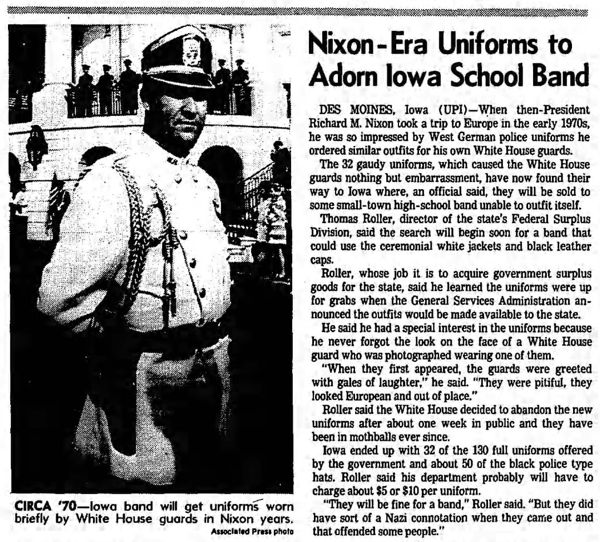
Los Angeles Times - May 15, 1980
Posted By: Alex - Fri Oct 28, 2016 -
Comments (7)
Category: Fashion, 1970s
Least-Authentic Native-American Motifs Ever
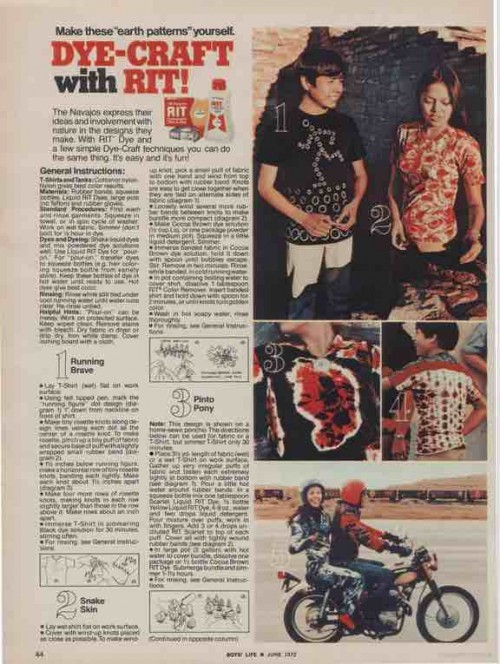

Original ad here.
Posted By: Paul - Mon Oct 17, 2016 -
Comments (2)
Category: Art, Fashion, Hobbies and DIY, 1970s, Native Americans
Blue Jean TV
In the 1970s, it was widely believed that any product could be improved by adding denim to it. One example of this, already featured on WU, was the AMC Gremlin "Levi" Edition — an economy car upholstered with Levi jeans. It debuted in the early 70s.Another example is the Zenith "Sidekick" Blue Jean TV, which hit the market in 1974. From the ad copy:

If you'd like to own one of these beauties, there's one for sale on eBay. Current bid is only $49.99.
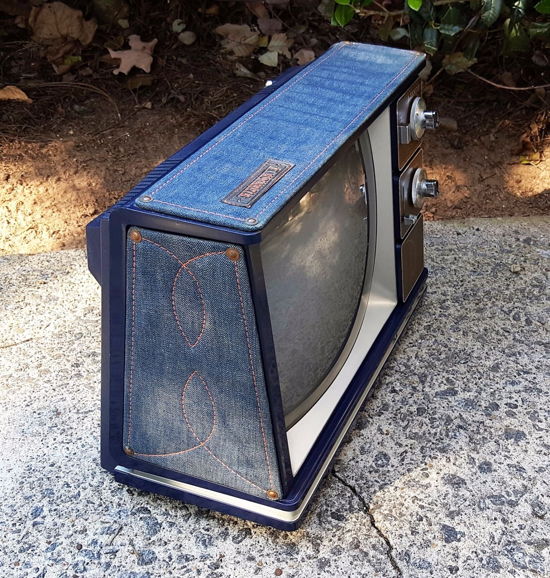
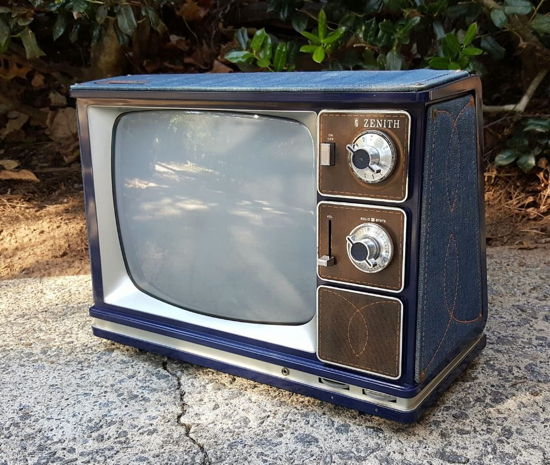
Posted By: Alex - Sat Oct 15, 2016 -
Comments (2)
Category: Fashion, Denim, Products, 1970s
Styled in California
My personal choice is the pants with different-colored legs worn by the young lad.
Can you say "sunburst terry twosome" three times fast?
Posted By: Paul - Sun Oct 09, 2016 -
Comments (1)
Category: Fashion, Regionalism, Advertising, 1960s
Pollution-Detecting Shirts
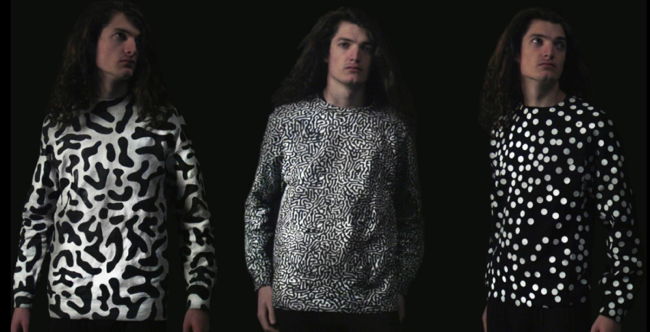
These shirts sold by aerochromics alert their wearers to the presence of dangerous levels of pollution by changing color. They go for $500 a shirt. There are three styles to choose from that differ in pattern and what they react to — either carbon monoxide, radiation, or "particle pollution."
So if you get the carbon monoxide or radiation-detecting shirt, how exactly do you test that it really works — without putting yourself in a life-threatening situation?
Posted By: Alex - Sun Sep 18, 2016 -
Comments (2)
Category: Fashion

| Who We Are |
|---|
| Alex Boese Alex is the creator and curator of the Museum of Hoaxes. He's also the author of various weird, non-fiction, science-themed books such as Elephants on Acid and Psychedelic Apes. Paul Di Filippo Paul has been paid to put weird ideas into fictional form for over thirty years, in his career as a noted science fiction writer. He has recently begun blogging on many curious topics with three fellow writers at The Inferior 4+1. Contact Us |




